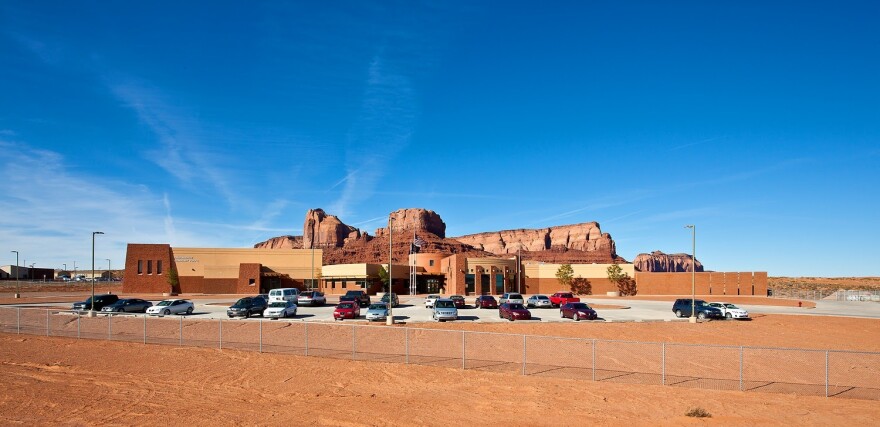When COVID-19 hit the Navajo reservation last year, families lost more than just their loved ones. They lost the stories those loved ones carried, according to Denece Kitto, the principal at Tse'Bii'Nidzisgai Elementary School in Monument Valley.
“I kept hearing this sentence over and over again that they left with their stories in them,” Kitto said. “After I’d heard it so many times I thought, ’Oh my goodness, is there something we can do to help tell some of our elderlies’ stories?’”
That idea blossomed into a 135-page book filled with oral histories and drawings that was recently published by the San Juan Education Foundation. High school and elementary students in Monument Valley interviewed their grandparents and relatives about what life used to be like on the Navajo Nation for the book, titled “Hózhó, A Walk in Beauty.”
Monument Valley High School graduate Shannon Luna interviewed her 79-year-old grandmother, Bessie Holiday. Luna said her grandmother has always emphasized the importance of learning from elders.
“‘They’re not here forever,’ is what she used to tell me, and ‘Get to know as much as you can from them, because later it is going to help you in life,’” Luna said. “So I guess carrying information is really important to our culture.”

Luna said she learned new things about her grandmother from the experience, despite the fact that her grandmother helped raise her.
“I didn't know that she went to school,” she said. “Our family doesn’t really emphasize the importance of education, so to learn that she went to school was pretty cool.”
She said she also learned her grandmother wanted to go to college but was unable to because she had to stay home and take care of livestock and her siblings. Luna said that makes her proud to be attending college at Southern Utah University this fall, where she plans to major in psychology.
English teacher Doug Freed, who edited the book, said he was initially intimidated by the scope of the project. He said it took hundreds of hours to edit, but the student response made it worth the effort.
“What we got back — well it surprised me — there was a level of engagement on this assignment that we don't usually see,” he said.
Freed attributes the excitement about the project to its cultural relevance and focus on family. He said when read together, the interviews paint a picture of what life was like in Monument Valley in the 1930s through the 70s or 80s.
“There are really strong themes,” he said. “We never told anyone to ask about horses, but horses were very, very important. The gardens were also a really big deal. Sadly the gardens have gone away, because there’s just no water.”
All proceeds from the book will go toward scholarships for students who are planning to attend college, like Luna, or pursuing alternative forms of higher education.






